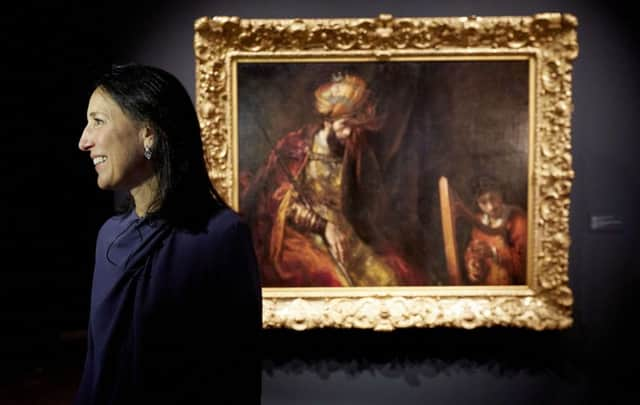Museum declares painting is by Rembrandt van Rijn


The announcement should end years of “is-it-or-isn’t-it” debate about whether Saul and David was a real Rembrandt.
Researchers used advanced X-ray techniques to peer through several coats of paint that had been applied during previous restorations and establish that the original pigments were the same as those Rembrandt used in the 17th century.
Advertisement
Hide AdAdvertisement
Hide AdPaint sampling showed that the primer used was typical of Rembrandt’s studio in the 1650s and 1660s.
For decades, there was no question. A former director of the museum in The Hague, Abraham Bredius, bought the painting more than a century ago – but in the late 1960s, Rembrandt expert Horst Gerson cast doubt on who actually painted the Biblical scene of King Saul using a curtain to dab a tear from his eye while David, kneeling below the king, plucks the strings of a harp.
Restorer Carol Pottasch said it was no surprise that Gerson questioned who painted the oil-on-canvas work, because previous restorations had added so much paint.
“I guess that was the biggest problem that he faced. He couldn’t see a painting by Rembrandt because there was no painting to see,” she said.
“And now we’ve taken off all these layers you can actually see the original paint again and there’s no doubt.”
Part of the team that confirmed the attribution was renowned Rembrandt expert Ernst van de Wetering.
Like many crime scene investigations, the Mauritshuis inquiry had to deal with a “victim” that had suffered abuse. Cut up, painted over and faded over time, Saul and David even had part of another painting stuck into its top right-hand corner.
“Before the painting was treated, before it was cleaned, it became clear that the painting had been overpainted a number of times, that the painting had discoloured, that its original dimensions had been changed in the past,” said Joris Dik of Delft Technical University, whose hi-tech scans helped establish the painting’s authenticity and guide restorers.
Advertisement
Hide AdAdvertisement
Hide Ad“It’s been really treated brutally, this painting, in multiple past restoration campaigns.” Mauritshuis director Emilie Gordenker said the investigation turned up plenty of surprises. Peering through the paint, experts saw a canvas that almost resembled a jigsaw puzzle.
“The analysis helped us to determine that the painting is in fact made up of 15 different pieces of canvas; three main parts – the Saul, the David and an insert of a copy of an old painting in the upper right corner plus strips all around the edges,” she said.
Now newly reattributed to Rembrandt, the restored canvas is the centrepiece of an exhibition opening on Thursday and running until 13 September.